| Main page Graphics Photography Music & Audio Audio Plugins Video Tools Web Design Documents Space Astro Amiga Funny Surreal Links & Contact |
User Interface Button OrderThis article is still under development...This is a study of the eight fundamental ways of how to arrange OK and Cancel in a dialog. Assumptions:
1. Left aligned, left to right Pros: Proper reading order (reading left to right will bring you to the OK button first, which is what you want in most cases). Most used button is at the corner of the dialog. Cons: 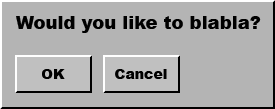 2. Left aligned, right to left Pros: Cons: Unlogic reading order. Most used button is not in the corner. 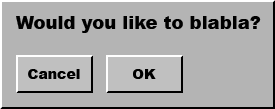 3. Right aligned, left to right Pros: Left to right reading order. Cons: Most used button is not in the corner. 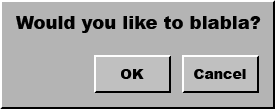 4. Right aligned, right to left Pros: Most used button is in the corner. Cons: Unlogic right to left reading order. 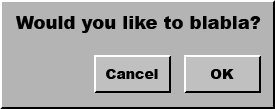 5. Centered, left to right Pros: Left to right reading order. Cons: 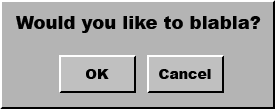 6. Centered, right to left Pros: Cons: Unlogic right to left reading order. 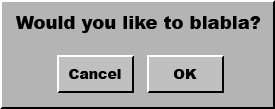 7. Stretched to fill, left to right Pros: Left to right reading order. Cons: 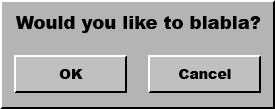 8. Stretched to fill, right to left Pros: Cons: Unlogic right to left reading order. 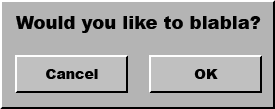 Conclusion:If you right align the buttons inside the window, you're headed for trouble because you are suddenly forced to choose between two solutions that are both problematic. Thus i would recommend chosing 1, 5 or 7. Currently the only desktop systems that use the Cancel-OK button ordering are Macintosh and Gnome/GTK. All other environments i've encountered (Microsoft Windows, KDE, Amiga, Atari and SGI Irix.) use the OK-Cancel order. So the suggested solution favors both logic and statistics.Website by Joachim Michaelis
|